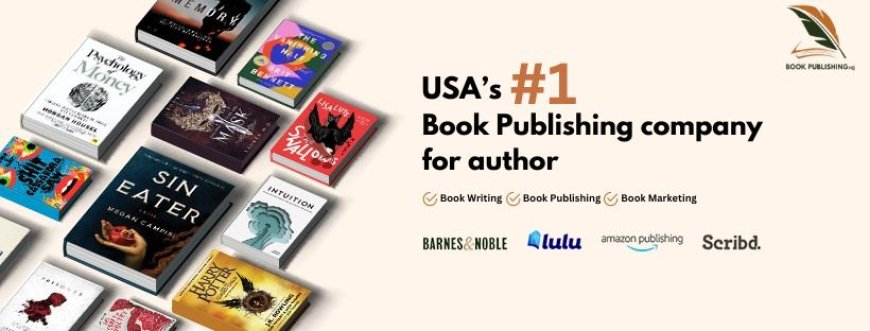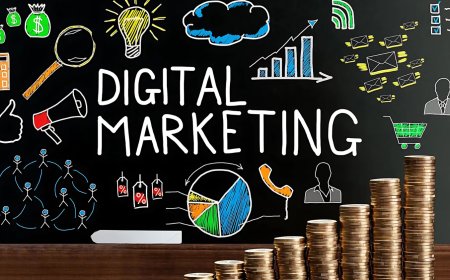Exploring Book Publishing Services in the USA
Book Publishing HQ – Your Ultimate Book Publishing Service and Book Marketing Partner

With the variety of book publishing services in USA, it's important to understand your options. Today’s publishing landscape offers three primary models: traditional publishing, self-publishing, and hybrid publishing. Each comes with its own unique benefits and challenges, and choosing the right one will depend on your personal goals, timeline, and budget.
In this guide, we’ll break down the features of these publishing models to help you make the best choice for your book.
Traditional Publishing: The Classic Approach
Traditional publishing remains a respected and well-established model for many authors. In this method, authors typically submit their manuscripts to literary agents, who then present them to well-known publishing houses like HarperCollins, Penguin Random House, or Macmillan. If a publisher accepts your manuscript, they take over the production, marketing, and distribution processes, covering all associated costs.
Benefits of Traditional Publishing:
- Access to Expert Teams: From editors and cover designers to marketers, your book is handled by professionals every step of the way.
- No Upfront Costs: The publisher foots the bill for everything from editing to production and distribution.
- Widespread Availability: Traditional publishers have longstanding relationships with bookstores, libraries, and online retailers, ensuring that your book reaches a broad audience.
- Industry Prestige: Being published by a top publishing house can boost your reputation and enhance your writing career.
However, this route also has its downsides:
Drawbacks of Traditional Publishing:
- Competitive and Selective: Traditional publishing is highly competitive, especially for new authors. Securing an agent alone can be a challenge.
- Lengthy Process: Traditional publishing often involves a lengthy timeline, with some books taking a year or more to hit the shelves.
- Limited Creative Control: Authors in traditional publishing typically have limited say in cover design, pricing, and marketing decisions.
- Lower Royalties: While you don’t bear the upfront costs, your earnings per book sold are lower, with royalty rates generally ranging from 10-15%.
Self-Publishing: Freedom and Control
Self-publishing has surged in popularity, particularly thanks to platforms like Amazon Kindle Direct Publishing (KDP) and IngramSpark, which make it easy for authors to manage the entire process on their own. In self-publishing, you retain full control over your book, from content to design and distribution, but you're also responsible for covering all costs associated with getting the book to market.
Benefits of Self-Publishing:
- Complete Creative Autonomy: You have total control over your book’s cover, title, content, pricing, and marketing strategy.
- Faster Publication: Once your manuscript is ready, self-publishing platforms allow you to release your book to the market in a matter of days.
- Higher Royalties: Self-published authors can earn up to 70% royalties on platforms like Amazon, a significantly higher percentage than traditional deals offer.
- Direct Audience Engagement: Self-publishing allows you to establish a direct connection with your readers, which can be an advantage for building a personal brand and fanbase.
While appealing, self-publishing does come with its own challenges:
Drawbacks of Self-Publishing:
- Personal Financial Investment: You’ll need to pay for everything upfront, including professional editing, cover design, and marketing.
- Responsibility for Marketing: All promotional activities are your responsibility, which can be overwhelming without the support of an experienced team.
- Limited Brick-and-Mortar Access: While self-published books perform well on digital platforms, getting them into physical bookstores can be more challenging.
- Perceived Stigma: Although self-publishing is becoming more accepted, there’s still a lingering stigma attached to it in some circles.
Hybrid Publishing: A Balanced Option
Hybrid publishing sits between traditional and self-publishing. In this model, authors pay for certain services—like editing, design, and marketing—while the hybrid publisher provides professional support. Hybrid publishers such as Greenleaf Book Group and She Writes Press allow authors to maintain control while benefiting from expert services that elevate the quality of the final product.
Benefits of Hybrid Publishing:
- Access to Professional Services: Hybrid publishers offer many of the same services as traditional publishing houses, including professional editing and design, which can enhance the quality of your book.
- More Author Control: You’ll have more say over the creative and business aspects of your book compared to traditional publishing.
- Higher Royalties: Since hybrid publishers don’t take as large a cut as traditional houses, authors can earn more per book sold.
- Flexible Contract Terms: Hybrid publishers often offer more favorable contract terms, giving you more autonomy over your career.
However, hybrid publishing isn’t without its downsides:
Drawbacks of Hybrid Publishing:
- Upfront Costs: Like self-publishing, hybrid publishing requires authors to invest in services upfront, which can add up depending on the publisher and the package you choose.
- Varying Quality: Not all hybrid publishers offer the same level of professionalism or quality, so it’s essential to research thoroughly.
- Limited Distribution Reach: While better than self-publishing, hybrid publishers may not have the same wide-reaching distribution capabilities as traditional publishers.
Deciding on the Right Path
When selecting the best route for your book, consider your personal goals, resources, and what you hope to achieve with your publication. Below are a few key questions to guide your decision:
-
How much creative control do you want? If you value full creative freedom, self-publishing or hybrid publishing could be ideal. Traditional publishing involves more oversight from professionals, which may limit your control over certain aspects of your book.
-
What’s your budget? Traditional publishing doesn’t require upfront payments but may result in lower royalties. Both self-publishing and hybrid publishing require authors to invest in services, so be prepared to allocate funds if you choose either of these paths.
-
How quickly do you want your book on the market? Self-publishing is by far the fastest route, with some platforms enabling you to release your book within days. Hybrid publishing timelines vary, while traditional publishing typically involves the longest wait.
-
What kind of reach do you need? Traditional publishing offers the most comprehensive distribution, reaching bookstores, libraries, and online platforms. Self-publishing is more reliant on digital platforms like Amazon, while hybrid publishing offers a middle ground.
-
Are you willing to handle marketing? Marketing can make or break your book’s success, and in self-publishing, it’s entirely up to you. Traditional publishers provide a marketing team, but you’ll likely still need to engage in promotional efforts. Hybrid publishers often offer tailored marketing services, but these come at an extra cost.
Conclusion
The landscape of book publishing services in USA is diverse and offers a variety of paths for authors. Whether you seek the industry connections and prestige of traditional publishing, the independence and high royalties of self-publishing, or the balanced support of hybrid models, the best path depends on your individual needs and goals.
Each publishing model comes with its unique set of pros and cons. Take the time to assess what matters most to you—whether it's creative control, distribution reach, or financial investment—and choose the option that aligns with your vision.
What's Your Reaction?














![Noots Focus Reviews [Truth Exposed 2025]!](https://news.bangboxonline.com/uploads/images/202501/image_430x256_678e3b94881a1.jpg)
![Vivalis Male Enhancement: The Must-Know Ingredients [2025 Update]](https://news.bangboxonline.com/uploads/images/202501/image_430x256_678e3b54e396c.jpg)








